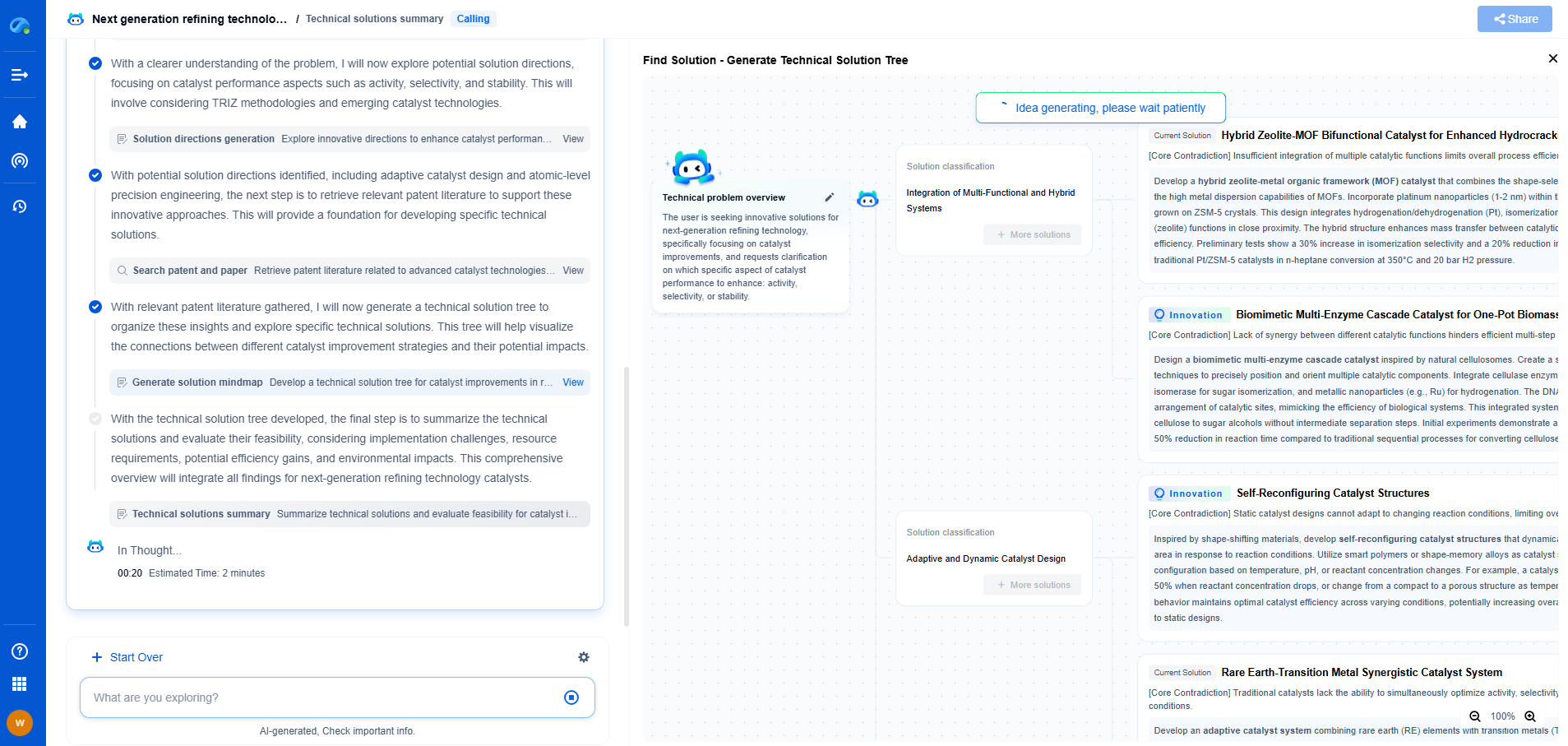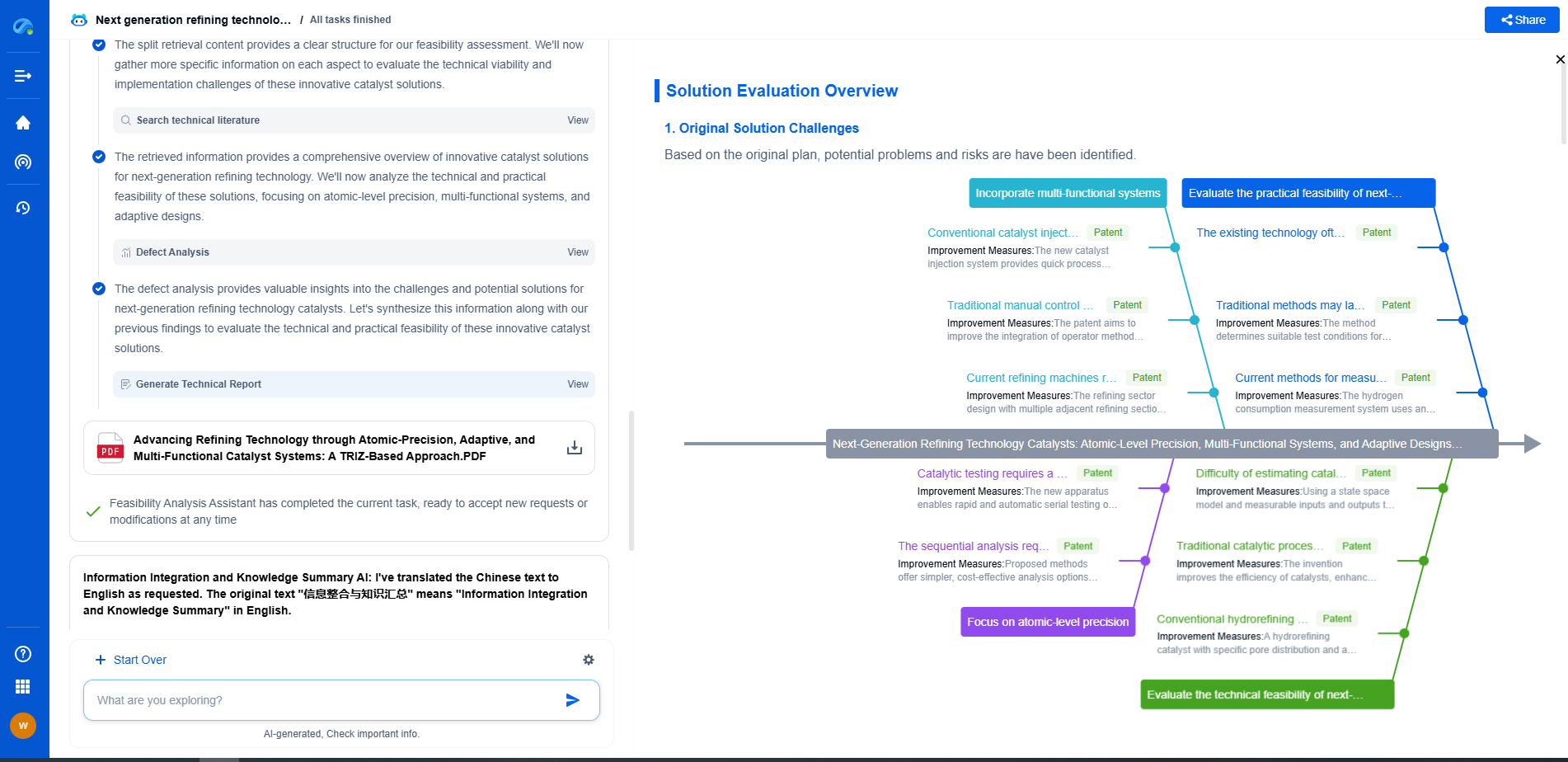AI-Driven Electromagnetic Design: How Machine Learning Optimizes Antenna Performance
JUN 26, 2025 |
The field of electromagnetic design has witnessed significant advancements in recent years, particularly with the integration of artificial intelligence (AI) and machine learning (ML). These technologies are reshaping how engineers approach the design and optimization of antennas, key components in communication systems. By leveraging machine learning algorithms, the industry is moving towards more efficient and effective antenna designs, significantly enhancing performance and reliability.
The Role of Machine Learning in Antenna Design
Machine learning serves as a powerful tool for solving complex optimization problems in antenna design. Traditionally, designing antennas involved a trial-and-error approach, relying heavily on the expertise of engineers and extensive computational resources. However, with ML, engineers can now process vast datasets and model complex electromagnetic interactions more effectively.
ML algorithms can analyze historical design data to identify patterns and predict performance outcomes for new designs. This predictive capability enables engineers to optimize parameters such as size, shape, and material properties, leading to antennas that are not only cost-effective but also tailored to specific performance requirements.
Enhanced Simulation and Modeling
One of the most significant contributions of machine learning to electromagnetic design is the improvement in simulation and modeling processes. Antenna design traditionally relied on computationally intensive simulations to predict electromagnetic behavior. ML algorithms streamline this process by creating surrogate models that approximate the behavior of complex systems with high accuracy.
These surrogate models reduce the computation time required for simulations while maintaining precision, allowing engineers to explore more design iterations in a shorter time. This accelerates the design process and opens up opportunities for more innovative solutions that might not have been feasible with traditional methods.
Optimization Techniques in Antenna Design
Optimization is at the heart of antenna performance enhancement, and machine learning excels in this domain. Genetic algorithms, neural networks, and reinforcement learning are among the ML techniques used to optimize antenna designs effectively. These algorithms simulate the evolutionary process, iteratively refining antenna parameters to achieve the best possible performance.
For example, genetic algorithms use principles of natural selection to explore a wide range of design possibilities, gradually converging on the most efficient solution. Neural networks, on the other hand, can learn from vast amounts of data to make informed decisions about optimal design configurations.
Real-World Applications and Case Studies
The application of AI-driven electromagnetic design is not limited to theoretical exploration; it has practical implications in various industries. In telecommunications, for instance, 5G and beyond networks require antennas that can handle higher frequencies and bandwidths. Machine learning helps design antennas that meet these demands while ensuring minimal interference and maximum signal strength.
Moreover, in aerospace and defense, where compact and highly efficient antennas are crucial, AI-driven designs provide a competitive edge. Companies are already applying these technologies to develop advanced radar systems, satellite communications, and even automotive radar for autonomous vehicles.
Challenges and Future Directions
Despite its numerous benefits, AI-driven electromagnetic design faces challenges such as data quality, model interpretability, and the need for domain-specific expertise. Ensuring the availability of high-quality training data is crucial for the success of ML models. Furthermore, understanding the decision-making process of complex algorithms remains a challenge, necessitating the development of more interpretable models.
Looking forward, the integration of AI into electromagnetic design is expected to deepen, with continued advancements in ML techniques and computational power. As AI continues to mature, it will likely become an indispensable tool for engineers, driving further innovation in antenna performance optimization and beyond.
Conclusion
AI-driven electromagnetic design represents a transformative shift in how antennas are developed and optimized. By harnessing the power of machine learning, engineers are pushing the boundaries of what is possible, creating antennas that are more efficient, reliable, and tailored to specific needs. As this technology continues to evolve, its impact on communication systems and related fields will undoubtedly grow, paving the way for a more connected and technologically advanced future.
Empower Electromagnetic Innovation with Patsnap Eureka
From high-frequency antenna arrays and electromagnetic shielding to plasma propulsion and wave-based energy transfer, the electromagnetic domain sits at the core of next-generation technologies. Yet navigating its vast landscape of patents, research papers, and evolving technical standards can be time-consuming and complex.
Patsnap Eureka, our intelligent AI assistant built for R&D professionals in high-tech sectors, empowers you with real-time expert-level analysis, technology roadmap exploration, and strategic mapping of core patents—all within a seamless, user-friendly interface.
👉 Experience Patsnap Eureka today and transform how your team navigates the complexity of electromagnetic innovation.
- R&D
- Intellectual Property
- Life Sciences
- Materials
- Tech Scout
- Unparalleled Data Quality
- Higher Quality Content
- 60% Fewer Hallucinations
Browse by: Latest US Patents, China's latest patents, Technical Efficacy Thesaurus, Application Domain, Technology Topic, Popular Technical Reports.
© 2025 PatSnap. All rights reserved.Legal|Privacy policy|Modern Slavery Act Transparency Statement|Sitemap|About US| Contact US: help@patsnap.com

